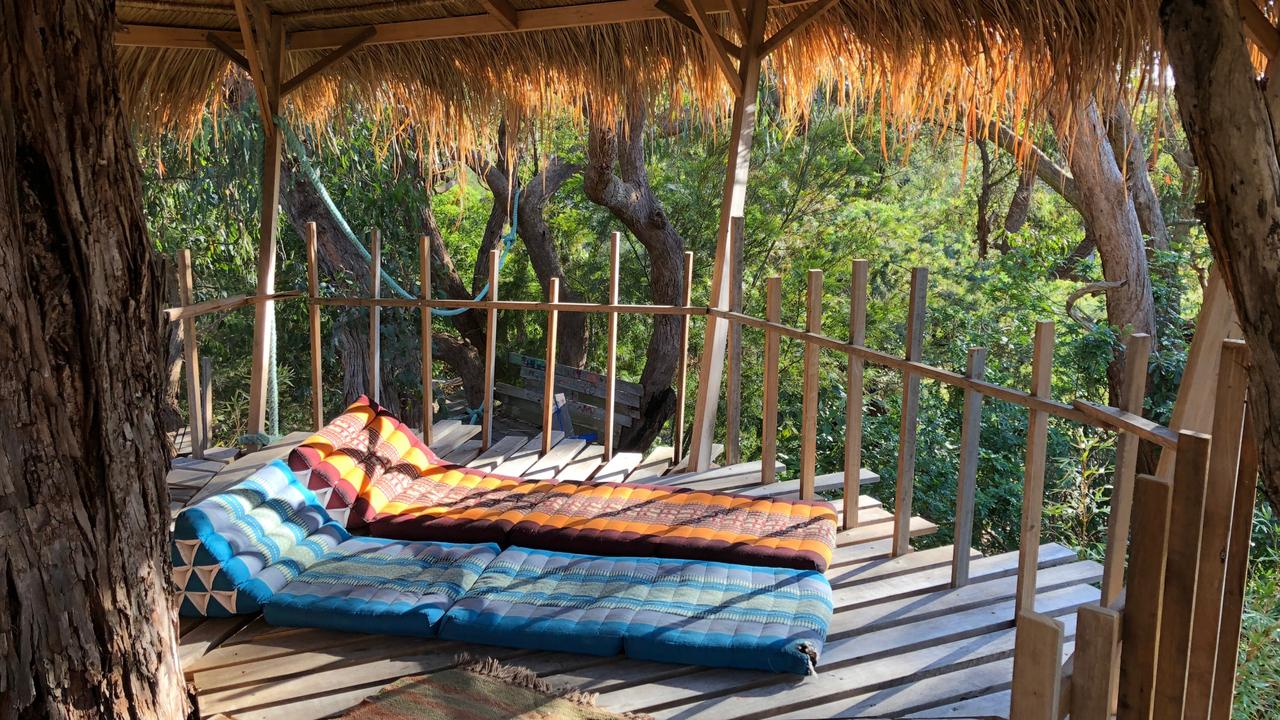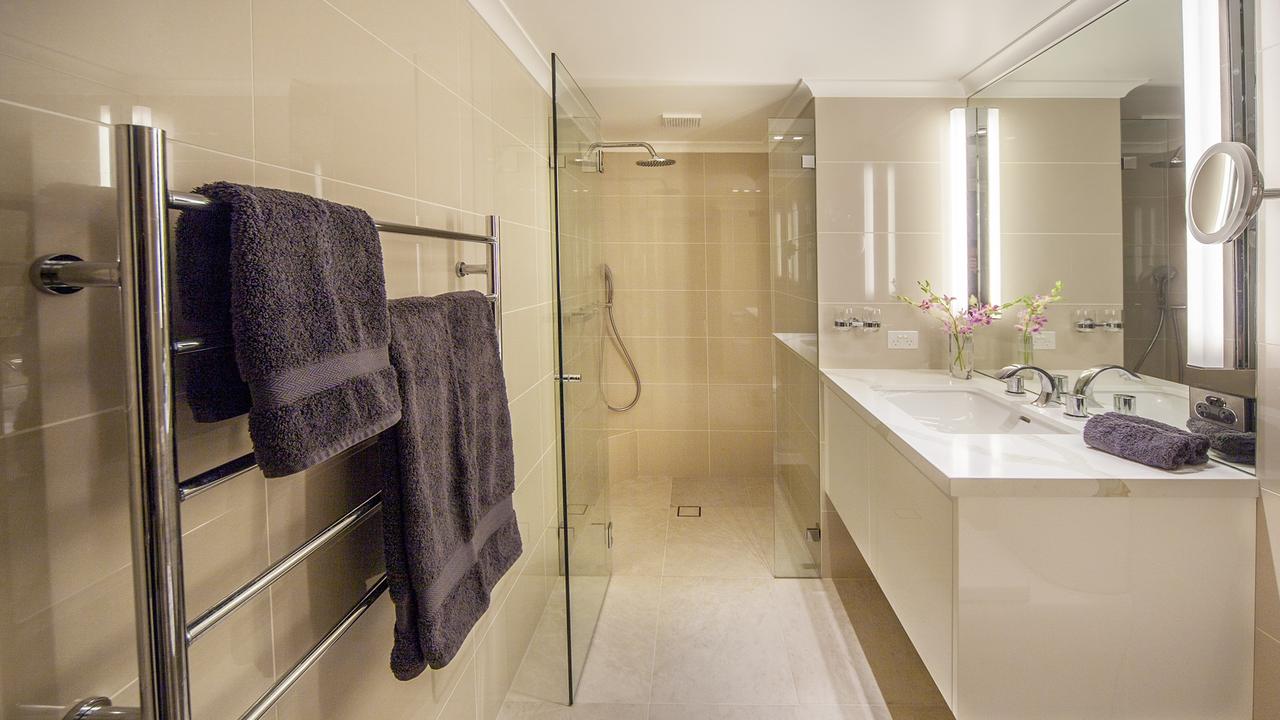McMansion ‘home invasion’ changing the face of Melbourne’s leafy east
THE story of one Glen Waverley brick house, once considered a perfect example of the great Australian dream, perfectly captures a “home invasion” taking place in Melbourne’s leafy east.
VIC
Don't miss out on the headlines from VIC. Followed categories will be added to My News.
THE story of one brick house perfectly captures a “home invasion” taking place in Melbourne’s leafy east.
Like thousands of others built in the suburb of Glen Waverley about half a century ago, the three-bedroom home at 28 Lisbon St featured a side driveway, small front porch and a backyard with a Hills Hoist and just enough space for kicking the footy.
It’s easy to imagine the house’s original owners living the great Australian dream — building a home for the family with all the trappings of middle class life that was close to good schools, all the shops you needed and a highway straight to the office job in the city.
The humble brick home was last sold in May 2014. Its desirable location in the Glen Waverley Secondary College zone earned it $1.408 million.
The house was then bulldozed and its yard paved over.
Today, a two-storey, six-bedroom giant in the French provincial style stands in its place.
No. 28 Lisbon St changed hands again in March, this time fetching $4.08 million in its new form.
Harcourts Judd White director Dexter Prack, whose agency handled this sale, says the stellar result appears to have started a French provincial housing-revolution in the Chinese buyer hotspot of Glen Waverley.
“There’s only a handful of French provincial houses in Glen Waverley now,” Mr Prack says.
“But in the last year or two, they’ve started to crop up, purely because builders know buyers want them.”
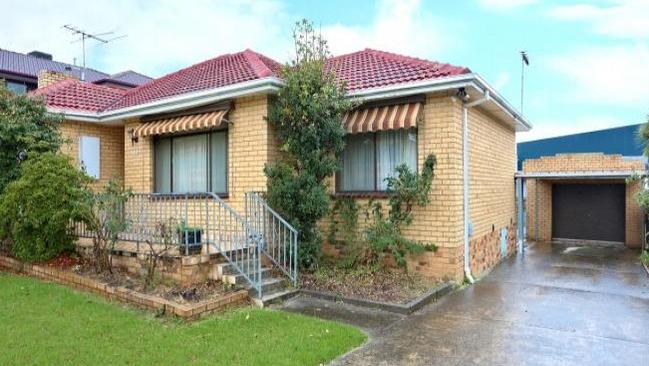
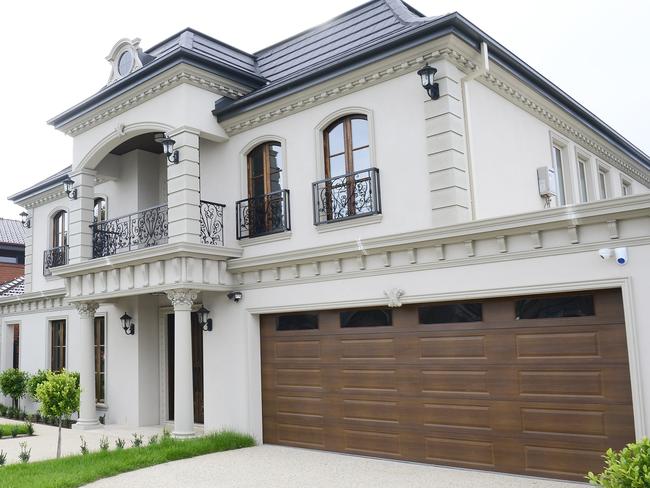
These types of homes may only be new to Glen Waverley, but they began to pop up in Melbourne suburbia about a decade ago — about the time the Chinese love affair with the city’s property market began.
Dubbed “McMansions” by those who are offended by their ostentatious style, the properties are increasingly replacing traditional homes in suburbs such as Balwyn, Kew, Canterbury and Camberwell.
Real estate agents say they’re mainly favoured by Chinese-background residents, who prefer brand new homes and believe the architecture signals wealth and prosperity.
They’re typically selling for between $3.5-5 million, and are becoming so prominent in Melbourne’s east and southeast that councils are being swamped with complaints from residents concerned their streetscapes are being changed for the worse.
Planning expert Michael Buxton believes Melbourne is “just seeing the beginning” of the McMansion takeover.
The RMIT professor says parts of Melbourne’s east could be dominated by the big, boxlike properties within the next decade, “substantially changing” the appearance of suburban streets.
While councils, led by the Cities of Boroondara and Monash, are exploring ways to address the McMansion issue, Prof Buxton says they’re effectively powerless to prevent houses being demolished and replaced with the ostentatious homes.
“There’s often no planning control affecting an owner’s attempt to replace one house with another house, unless there’s heritage overlay,” he says.
Prof Buxton believes only a drop in buyer interest in McMansion-style homes, increased planning regulations, or further changes to foreign buyer rules could stop the trend — none of which seem likely.
Some members of Melbourne’s property industry disagree, saying a recent change to the Foreign Investment Review Board’s rules already threatens to slow the city’s booming new mansion market.
The new guideline states that a single home built to replace a demolished established home will “generally” no longer be considered a new dwelling, and foreign nonresidents are only allowed to buy new or off the plan properties.
Others say it’s too early to tell whether the change will have any impact.
Prof Buxton, for one, is sceptical: “It’s not out of the question that in five to 10 years, Melbourne (could be) dominated by high-rises in the inner suburbs and in some of the middle ring, medium-rise apartments and McMansions.
“It’s not a good look.”
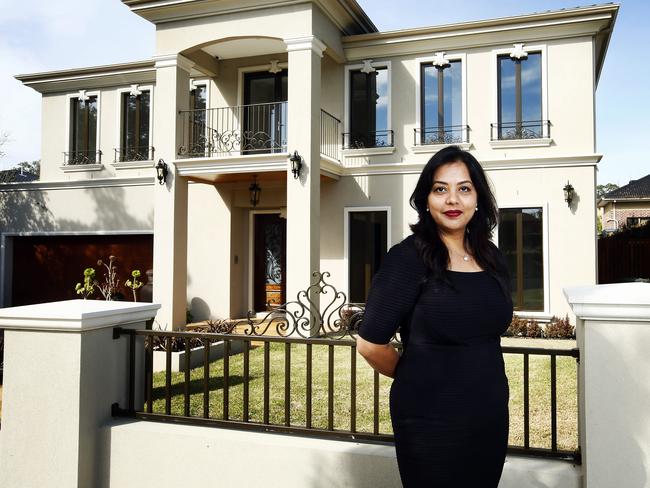
About 4000 homes have been knocked down in established Melbourne suburbs in recent years and rebuilt as “very large” residences with minimal gardens, Prof Buxton says.
Most of this activity occurred in the city’s middle ring suburbs.
“It’s quite concentrated, so it’s a noticeable trend,” Prof Buxton says.
“There’s really nothing much being gained for the city from this trend — it’s leading to fairly low dwelling occupancy in a large house taking up a whole block of land.
“It’s quite a wasteful use of land.”
Property developer Nisha Bajaj disagrees.
The director of Splendor Homes, which designs and builds luxury houses, has recently forayed into creating French provincial-style manors in the Glen Waverley area.
Ms Bajaj says there’s more than enough demand for the style of housing from the local Chinese market to justify the supply — she only planned on building “one or two” of the mansions this year, but has already been commissioned for four.
“Demand for them is tremendously overwhelming,” she says.
“I’ve actually had to let down a lot of requests lately.
“You can only do so much when you’re building quality homes.”
Splendor Homes has built and sold one mansion in this style, at 20 Landridge St in Glen Waverley, in the past six months.
The company is currently constructing two others at 6 Darri Court, Glen Waverley and 28 Pinewood Dr, Mount Waverley.
The Landridge St home fetched $2.631 million at an auction that attracted a 200-strong crowd last December.
Ms Bajaj says her company bought and knocked down two brick veneer units on a 725sq m block to build the 706sq m mansion.
The entire process — designing the home, obtaining building permits, demolition and construction — took nine months from the day she settled the sale of the units.
The eye-catching six-bedroom residence boasts an elevator, theatre room and upstairs kitchenette among its lavish features.
Its decorative wrought-iron features, off-white colour scheme, high ceilings, timber floors, kingsize bedrooms and minimal garden are typical of the French provincial style of home.
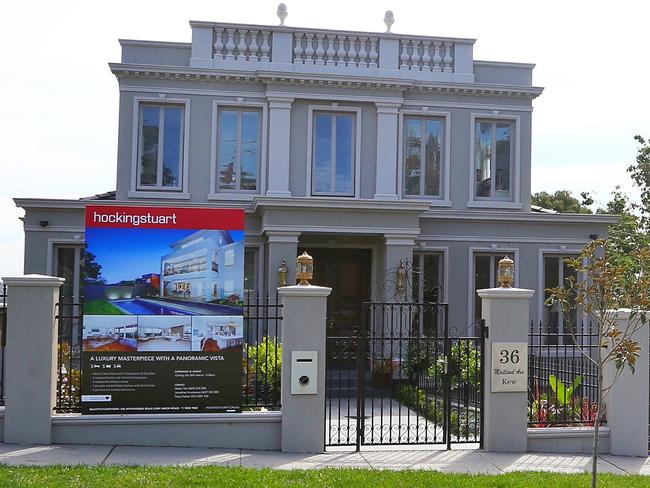
Ms Bajaj scoffs at the McMansion tag attached to this architecture. She says every individual property she creates is unique and intricately designed.
“I don’t want to build the same house every time,” she says.
“I actually want to travel to Europe, to go to France and look at the structures to learn.”
Real estate agent Robert Ding says the Chinese affinity with French provincial-style housing has historic roots.
A premier residential and retail district in Shanghai, the French Concession, was formerly a colonial settlement with ties to France.
“They do show off wealth as well, because people pay a lot of money for them,” the Marshall White Hawthorn agent says.
Mr Ding estimates he sold as many as 25 French provincial-style mansions last year in the Boroondara and Whitehorse areas.
He says the style of housing emerged in Melbourne in 2007, when Asian buyers started to become a prominent force in the city’s property market, eclipsing Georgian architecture as the design of choice for mansions.
“(Mansion builders) kept the box-shape, but changed the facade,” he says.
Ted Jao of RT Edgar Hawthorn recalls demand for faux-French provincial mansions being strong from the moment they debuted in Melbourne a decade ago.
Part of the reason was their affordability compared to similar housing in China, where only billionaires had the funds to buy them.
“When developers started building (them), they received an overwhelming response,” he says.
“They couldn’t build enough of them to satisfy buyer demand.”
Paul Ribas of LJ Hooker Glen Waverley says “the grandeur and opulence” of this style of housing is the main selling point drawing in cashed-up buyers.
“Image is very important to Asian buyers,” Mr Ribas says.
“(These homes) are a projection of prosperity.”
Hocking Stuart Balwyn’s Helen Yan says Asian buyers also prefer brand new homes — plus nonresidents from overseas are only allowed to purchase new or off the plan properties in Australia under the Foreign Investment Review Board’s rules.
Recent changes to those rules, which redefine what constitutes a new dwelling under Australia’s foreign investment framework, are the only thing developers see potentially slowing the faux-French provincial mansion market in Melbourne’s east.
The new guideline states that one home built to replace a demolished established home would “generally not be considered a new dwelling” by the FIRB anymore, and therefore would not be able to be purchased by an offshore buyer.
Two homes would need to be built to be considered new dwellings, as two homes replacing one was adding to the country’s housing stock.
The change has left some Melbourne developers fearing overseas buyers could be shut-out of the city’s booming market for new luxury homes — a market they’re driving.
But experts say the legislation is open to interpretation.
Peter Nevile, of Nevile & Co Lawyers, told the Herald Sun earlier this year that bulldozing an old residence and building a bigger and better new one was, in some cases, adding to the housing stock, as a buyer may not have wanted the original home in its condition.
“In that case, is that property an established dwelling? I would argue not. But we don’t know the answer,” he says.
“(A developer’s) got to test it out to be absolutely certain.”
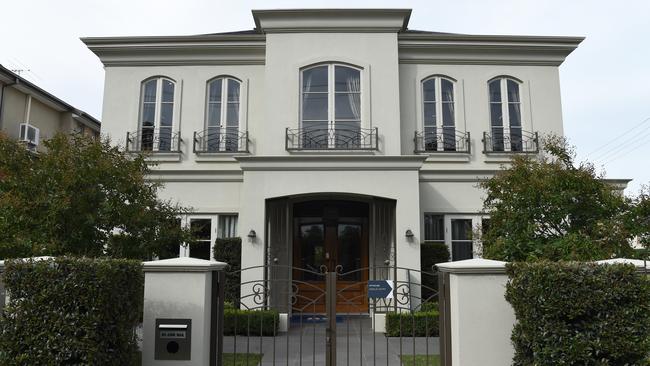
ONE Boroondara real estate agent is predicting mansions may not be the residence of choice for offshore Asian buyers in 2016 anyway.
Aussiehome Real Estate co-director Ming Li says his Chinese clients househunting in the Canterbury, Kew, Camberwell and Toorak areas had favoured smaller, modern townhouses on smaller blocks of land so far this year.
Mr Li says many of these clients had realised it would be hard for them to handle a big home when they were splitting their time between Melbourne and China.
“In many cases, the father needs to go back to China to operate his business, and the mother and children stay in Melbourne,” he says.
“So the new trend is not big land. From this year, we’ve received more and more inquiries from Chinese clients asking to buy small land, small gardens.
“This year, Chinese may not buy so many mansions. They’re now after less maintenance.”
Chinese buyers’ townhouses of choice featured modern facades, and often cost $2-$3 million. Mr Ling says an example is 22 Park Ave in Kew — a two-storey property on an “easy to maintain block” that sold for $2.28 million last November.
This is not to say Mr Li’s clients are no longer seeking large homes. The agent says he still sold more than 20 faux-French provincial mansions last year at more than $3 million each.
Mr Li is well aware of the negativity surrounding this style of home, but he says many offshore buyers aren’t.
“I’d like to encourage the Victorian or Federal Government to introduce a program to teach new Chinese investors or migrants about Victorian heritage regulations, about the character of Melbourne neighbourhoods,” he says.
“Before they moved to Australia, most of them have only experienced living in apartments.
“They don’t have much experience with living in big houses, maintaining the property and a garden, or how to be friendly in the neighbourhood.
“They’re keen to learn.”

